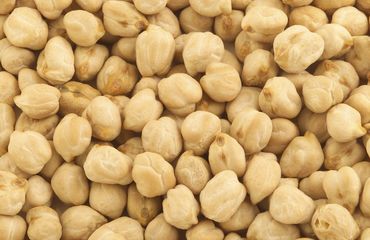São Paulo – Two containers loaded up with 24 tons of chickpea each are en route to the Port of Paranaguá, in Brazil’s Paraná state, from where they’ll ship to Dubai, in the United Arab Emirates, and to Colombia. This is the first export of the legume grown in Brazil, more precisely in Cristalina, Goiás, where grower Osmar Artiaga began a chickpea plantation, assisted by the Brazilian Agricultural Research Corporation (Embrapa).
The sale was backed by Agrícola Ferrari, a company out of Passo Fundo, Rio Grande do Sul specializing in the production and export of popcorn. “It’s a partnership between a natural person and a corporate entity. I am the only large-scale grower in Brazil, and Agrícola Ferrari is interested in selling the product abroad, especially in the Arab countries and India, where chickpea consumption is widespread,” Artiaga explains.
The project is still in an experimental stage, he says. Artiaga grows the legume over a 300-hectare area and will harvest some 600 tons this year. The amount is slightly over 10% of total Brazilian chickpea consumption – last year the country imported roughly 7,000 tons. “Our intention is to see 15,000 tons a year, supply the domestic market, and compete overseas,” he says.
Artiaga and Agrícola Ferrari’s plans, in case the product is met with good acceptance in other countries, include growing chickpea in Campo Novo do Parecis, Mato Grosso, in a 10,000-to-15,000 hectare tract of land. The first seeds will be planted in 2017, also on an experimental basis: Artiaga will look for the best soils and test out farming at different times of year to ascertain how weather influences the legume’s development.
The project is long-term: sizeable exports aren’t expected before 2019 or 2020. “We are going for a competitive product, and in that respect Mato Grosso is a good place, because the expanse allows for large amounts to be grown in a homogeneous way. Moreover, no major investment is required, since the same machinery that’s used in soy or maize farming can be used for chipckea,” he remarks.
Artiaga, an agronomist, has worked with chickpea since 2008. The legume was the subject of his master’s thesis – “Genetic improvement of chickpea.” He found a partner in Embrapa, whose goal is to enable the legume’s production in Brazil. The researcher Warley Nascimento had a tenure at the International Center for Agricultural Research in the Dry Areas (Icarda), in Lebanon, to find out more about the product.
“Osmar was my master’s student and from early on he was interested in increasing production,” says Nascimento. “We used the two chickpea strains that are best suited to the Brazilian soil and climate: BRS Aleppo and Cícero. The yield in Brazil is much higher,” he says.
“I grow wheat, maize, soy and beans. I chose chickpea because I believe in its potential: we will be able to get a product at a highly competitive price at the international level,” Artiaga asserts.
Though not a staple of Brazilians’ diets, the chickpea is a central part of Indian and Arab cuisine. While less than 10,000 tons are consumed in Brazil each year, worldwide consumption is around 10 million tons.
*Translated by Gabriel Pomerancblum




